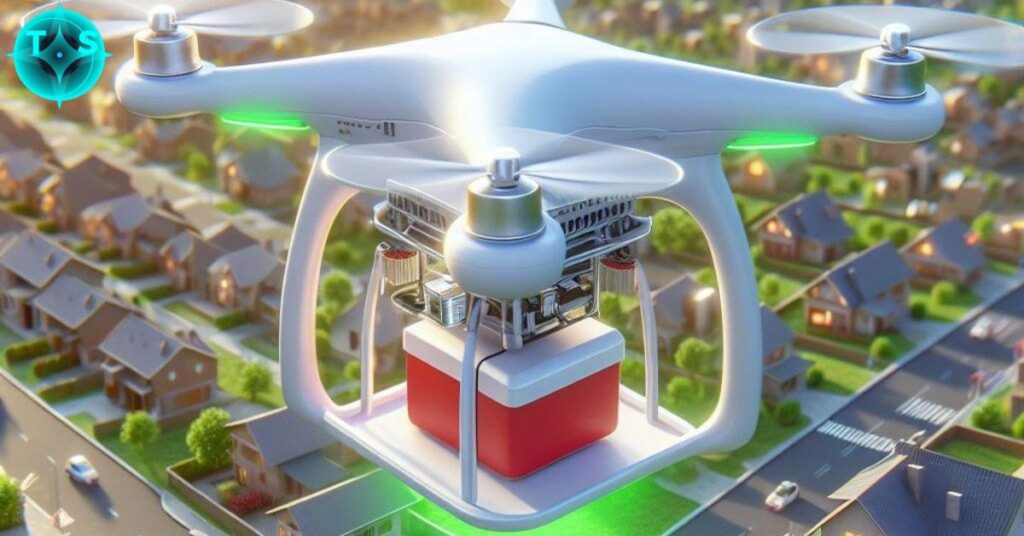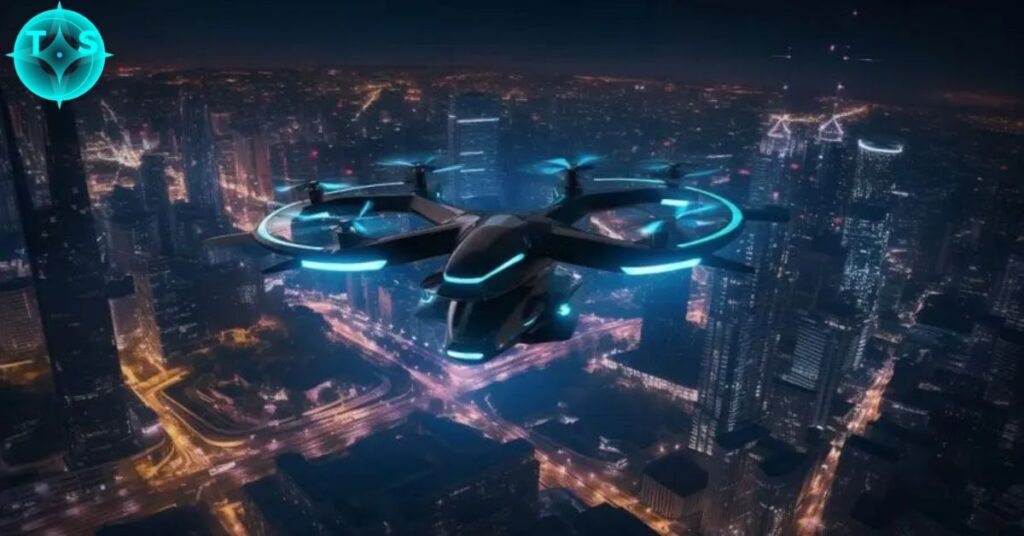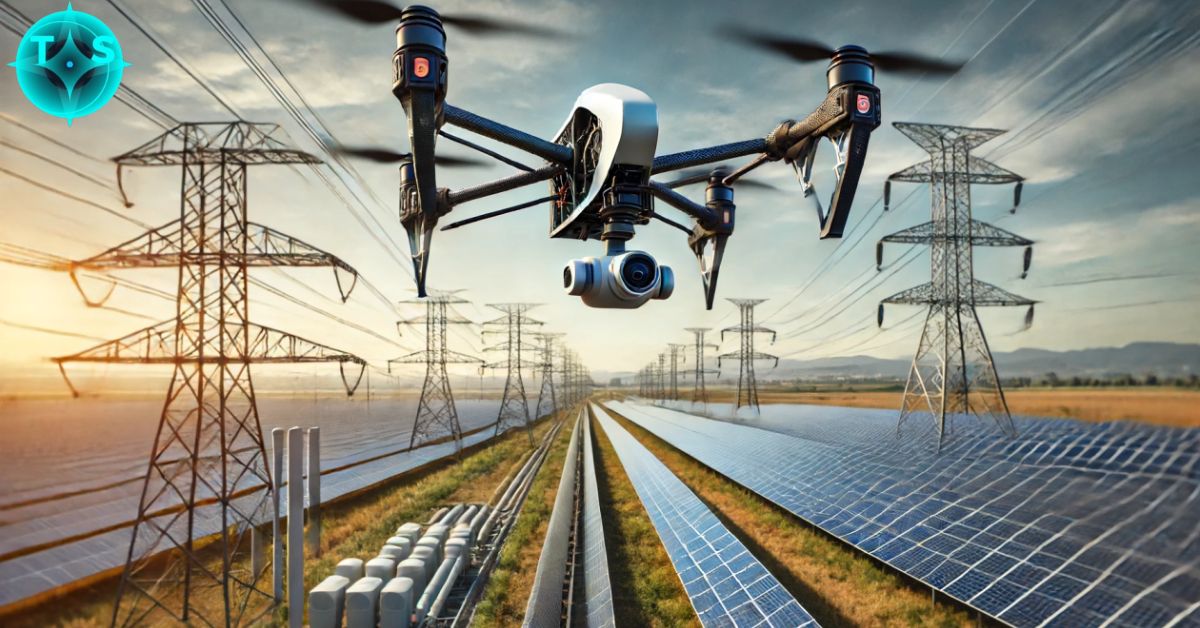The Evolution of Drone Design Technologies has transformed the way we think about aerial vehicles. From simple remote-controlled toys to sophisticated autonomous machines, drones have come a long way. This advancement in The Evolution of Drone Design Technologies continues to reshape industries worldwide.
Witness the remarkable transformation of drone technology as it soars from basic remote-controlled devices to sophisticated flying machines that are revolutionizing everything from package delivery to urban transportation.
Key Design Technologies in Drones
Modern drone technology represents an incredible fusion of cutting-edge engineering and innovative design principles. Each component, from the frame to the flight controller, works in perfect harmony to create these remarkable flying machines.
Advanced materials like carbon fiber and titanium alloys make today’s drones lighter yet stronger than ever before. These materials, combined with smart aerodynamic designs, help drones achieve longer flight times and better performance in various weather conditions.
The heart of every drone lies in its sophisticated electronic systems, from powerful brushless motors to state-of-the-art flight controllers. These components work together seamlessly to provide stable flight characteristics and precise control that even beginners can master.
Battery technology continues to push the boundaries of what’s possible in drone design. Modern lithium polymer batteries pack more power into smaller spaces, while new charging technologies help keep drones in the air longer than ever before.
Aerodynamics and Structural Design
Modern drone technology represents an incredible fusion of cutting-edge engineering and innovative design principles. Each component, from the frame to the flight controller, works in perfect harmony to create these remarkable flying machines.Advanced materials like carbon fiber and titanium alloys make today’s drones lighter yet stronger than ever before.
These materials, combined with smart aerodynamic designs, help drones achieve longer flight times and better performance in various weather conditions.The heart of every drone lies in its sophisticated electronic systems, from powerful brushless motors to state-of-the-art flight controllers.
Propulsion Systems
Electric motors dominate consumer drones, while larger commercial units may use hybrid systems. Brushless motors offer better efficiency and longevity. Variable pitch propellers provide enhanced control and maneuverability.
READ THIS BLOG: Transform Your Water: Flow-Tech Dual Function Softener/Filter 2024
Battery Technology
| Battery Type | Flight Time | Charging Time | Weight | Cost |
| Lithium-Ion | 20-30 mins | 60-90 mins | Light | Moderate |
| LiPo | 25-35 mins | 45-60 mins | Very Light | High |
| Solid State | 40-50 mins | 30-45 mins | Medium | Very High |
| Hydrogen Fuel Cell | 2-3 hours | 5-10 mins | Heavy | Extreme |
| Hybrid Systems | 1-2 hours | Variable | Heavy | High |
The Evolution of Drone Design Technologies has significantly improved battery performance. Modern drones use advanced lithium polymer batteries for better power-to-weight ratios.
Sensors and Navigation Systems
GPS, accelerometers, and gyroscopes work together for precise flight control. Advanced sensors enable obstacle avoidance and autonomous navigation. The Evolution of Drone Design Technologies keeps adding more sophisticated sensing capabilities.
Communication Technologies
Radio frequency systems provide reliable drone control. Advanced encryption protects against unauthorized access. 5G connectivity enables longer-range operations and real-time data transmission.
Software and AI Integration
Artificial intelligence enhances drone capabilities significantly. Machine learning algorithms improve flight stability and navigation. Computer vision enables advanced autonomous operations.
Challenges in Drone Design

Designing modern drones requires careful consideration of countless competing factors, from battery life to safety features. Engineers face the constant challenge of balancing performance with weight, as every added component impacts flight time and maneuverability.
Weather resistance poses a significant hurdle in drone design, requiring sophisticated solutions for wind, rain, and temperature variations. Manufacturers must create protective systems that shield sensitive electronics without adding excessive bulk or compromising aerodynamic performance.
Security concerns have become increasingly critical in drone development, demanding robust encryption and anti-hacking measures. These essential safety features must be seamlessly integrated while maintaining user-friendly operation and meeting strict regulatory requirements.
Regulatory Hurdles
Different countries have varying drone operation rules. Certification processes can be complex and time-consuming. Regular updates to regulations affect design requirements.
Security Concerns
Drones must incorporate anti-hacking features. GPS spoofing protection becomes increasingly important. Privacy considerations influence design choices.
Environmental Impact
Battery disposal remains a significant concern. Noise pollution affects urban use cases. Manufacturing processes need to become more sustainable.
Future Directions in Drone Design Technologies

The integration of advanced AI and swarm technology is set to revolutionize drone capabilities, enabling complex coordinated flights and autonomous decision-making that will transform industries from delivery services to search and rescue operations.
Breakthrough battery technologies, including solid-state cells and hydrogen fuel systems, promise to extend drone flight times from minutes to hours, opening up new possibilities for long-range operations and heavy-duty applications.
Urban Air Mobility concepts are rapidly moving from drawing boards to reality, with passenger-carrying drones and eVTOL vehicles poised to revolutionize city transportation through advanced navigation and safety systems.
Next-generation drones will feature unprecedented levels of autonomy, using sophisticated sensors and machine learning to adapt to changing environments, avoid obstacles, and optimize their performance in real-time.
Swarm Technology
Multiple drones working together cooperatively. Advanced algorithms enable coordinated flight patterns. Applications range from light shows to search and rescue.
Increased Autonomy
Better decision-making capabilities in various situations. Reduced need for human intervention. Enhanced safety features for autonomous operation.
Urban Air Mobility (UAM)
The Evolution of Drone Design Technologies points toward passenger-carrying drones. Electric vertical takeoff and landing (eVTOL) vehicles show promise. Infrastructure development needs to keep pace.
Enhanced Battery Technologies
Solid-state batteries offer longer flight times. New charging technologies reduce downtime. Improved energy density extends range capabilities.
READ THIS BLOG: NEOMED Research And Scholarships Badge: Excellence In Medicine
Frequently Asked Questions
How long can modern drones fly?
Consumer drones typically fly 20-30 minutes, while professional models can achieve 45+ minutes.
Are drones safe to operate in cities?
With proper safety features and operator training, drones can be safely operated in urban areas.
What’s the maximum range of commercial drones?
Most commercial drones can operate within 4-8 km range, depending on regulations and technology.
How much weight can drones carry?
Consumer drones carry 0.5-2 kg, while industrial drones can lift 20+ kg.
What weather conditions affect drone flight?
Strong winds, rain, and extreme temperatures can significantly impact drone performance.
Conclusion
The Evolution of Drone Design Technologies continues to push boundaries in aerospace engineering. From advanced materials to artificial intelligence, every aspect of drone technology keeps improving.
As we look to the future, The Evolution of Drone Design Technologies will enable new applications and capabilities we haven’t even imagined yet. The combination of better batteries, smarter software, and improved safety features will make drones an even more integral part of our daily lives.





